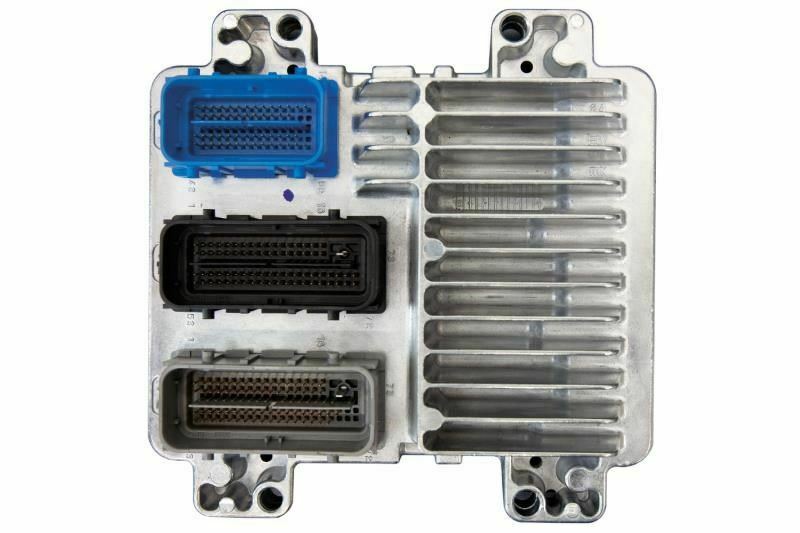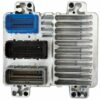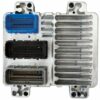Is your 2009 Cadillac XLR suffering from perplexing issues like a persistent check engine light, erratic engine behavior, or a no-start condition? The Engine Control Module (ECM), the sophisticated brain of your vehicle’s powertrain, is often the culprit. When it fails, it can disrupt everything from fuel delivery and ignition timing to transmission shifting, leaving your high-performance vehicle running poorly or not at all. This replacement Engine Control Module, part number 12630464, is the definitive solution to restore your vehicle’s factory performance and reliability.
This isn’t just a part in a box. We provide a comprehensive, plug-and-play solution. Before this module ships, our technicians will program it using your vehicle’s unique Vehicle Identification Number (VIN). This critical step ensures the ECM is loaded with the latest GM-certified software and calibrations specific to your XLR’s engine, transmission, and factory options. This eliminates the need for expensive dealership programming, saving you time and money and getting you back on the road faster.
Diagnosing a Faulty 2009 XLR Engine Module
A failing ECM can manifest in numerous ways, often mimicking other sensor or component failures. Correctly identifying the root cause is key. Symptoms often start intermittently and worsen over time. If your Cadillac is experiencing a combination of the issues below, it’s a strong indicator that the engine computer requires attention.
From the Diagnostic Bay
We had a 2009 Cadillac STS with the 4.6L V8 come in on a tow truck. The customer had replaced the alternator, battery, and even the starter, but the car would crank but not start. It had spark and fuel pressure, but the injector pulse was erratic. After hooking up our diagnostic scanner, we noticed the ECM was not communicating properly and was dropping data packets. We tested the power and ground circuits to the module, which were all perfect. This confirmed our suspicion: an internal ECM failure. We installed one of our pre-programmed modules, performed the quick 10-minute security relearn, and the engine fired up instantly and ran perfectly. It saved the customer from another costly and incorrect repair.
Common Symptoms of a Failing ECM
- ✔ Check Engine Light: The most common sign. The light may be on constantly or illuminate intermittently with codes related to module communication (like U-codes) or multiple, unrelated sensor failures.
- ✔ Engine Stalling or Misfiring: The ECM controls ignition timing and fuel injection. A fault can cause random stalling, rough idling, or misfires that feel like a bad spark plug or coil.
- ✔ Poor Performance and Fuel Economy: If the computer cannot properly manage the engine’s parameters, you’ll notice a significant drop in power, acceleration, and fuel efficiency.
- ✔ No-Start Condition: A completely failed ECM will prevent the engine from starting. The engine may crank but will not get the necessary signals for spark or fuel injection to fire.
- ✔ Transmission Shifting Problems: The ECM works in tandem with the Transmission Control Module (TCM). A faulty ECM can cause harsh shifting, delayed engagement, or the transmission getting stuck in one gear (limp mode).
- ✔ Intermittent Electrical Issues: Seemingly random issues with cooling fans running constantly or not at all can also be traced back to a failing engine computer.
A Reliable, Pre-Programmed Solution
This module is a direct replacement for service number 12630464 and is also interchangeable with a wide range of other GM part numbers, including 12636659, 12639300, 12628993, and more. It is a tested, high-quality component guaranteed to restore your vehicle’s functionality. The key benefit is our professional programming service. By providing your VIN at checkout, you receive a unit that is ready for installation right out of the box. While the module is plug-and-play, some GM vehicles may require a simple, key-on/key-off security relearn procedure that takes about 10-15 minutes and requires no special tools.
This ECM is compatible with a wide array of GM vehicles beyond the XLR, including the Chevrolet Corvette, Cadillac DTS, Hummer H3, Chevrolet Colorado, and GMC Canyon. Please verify the part number and check the detailed fitment list to ensure compatibility with your specific vehicle and engine option.
Frequently Asked Questions
Do I need to have this module programmed by a dealer?
No. We program the module to your vehicle’s specific VIN before we ship it to you. This makes the installation process much simpler and saves you a trip to the dealership.
Where is the ECM located on a 2009 Cadillac XLR?
On the 2009 XLR, the Engine Control Module is typically located in the right-hand (passenger side) front of the engine compartment.
What is a VIN and why do you need it for programming?
The VIN (Vehicle Identification Number) is a unique 17-digit code for your car. It allows us to access the exact factory software and calibrations for your engine, transmission, and other options, ensuring the replacement ECM works perfectly.
Will this fix my check engine light?
If the check engine light and associated codes are being caused by a faulty ECM, then yes, this part will resolve the issue. It’s crucial to ensure the ECM is the actual problem and not a separate sensor or wiring issue.
Is a security relearn procedure difficult to perform?
Not at all. For most GM vehicles of this era, the security relearn (also known as the Passlock or anti-theft relearn) involves a series of key cycles. It typically takes about 10-15 minutes and instructions are widely available online or can be provided. No special tools are needed.
My original module has a different part number. Will this still work?
Yes, this module is a direct replacement for multiple service numbers, including 12636659, 12639300, 12628993, and others listed in the description. As long as your original part number is on our interchange list, this module will fit and function correctly.


